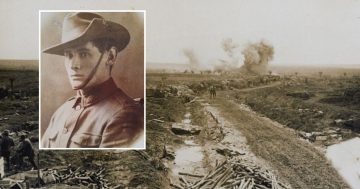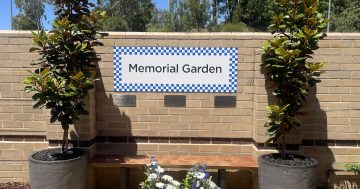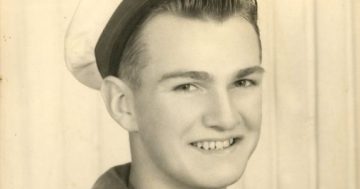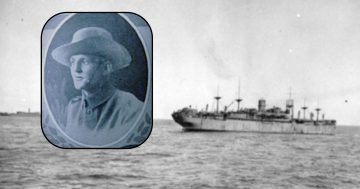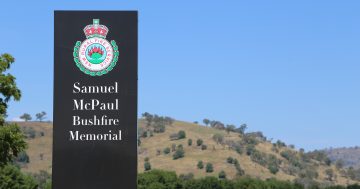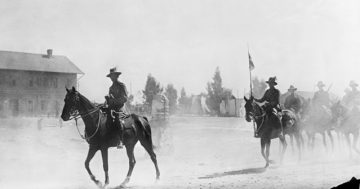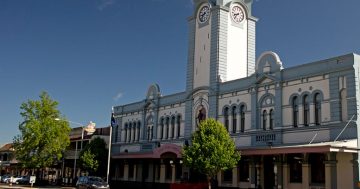
Braidwood’s Memorial Avenue commemorates King George V. Photo: Alex Rea.
War memorials are a place of pride across the length and breadth of Australia, ranging from the grand to the humble. They are a central feature of many country towns. But this Anzac Day, as services begin to take place again, another form of commemoration is in danger of being forgotten.
For more than a century, Australian communities have planted Avenues of Honour in memory of those who have given their lives in service. The avenues take many forms, from groves and parks to straight lines of trees, some deciduous imports and some Australian natives. Lone Pine plantings also fall into this category of memorial.
There are around a dozen examples across the Capital Region, from Berridale’s memorial park, planted in 1935 to honour 16 lives lost in the district, to Binalong’s War Memorial Avenue, established only in July 1999 to commemorate World War I and all later conflicts.
Murrumbateman’s memorial avenue runs along the Barton Highway, while in Goulburn, the Rocky Hill site was planted with trees to honour the fallen in 1925. The new Goulburn War Memorial Museum opened recently, but there’s less information about the fate of the trees established to commemorate the Great War.

The Rocky Hill War Memorial Museum has been upgraded, but less is known about the trees. Photo: Monuments Australia.
In Harden-Murrumburrah, the Heggaton Memorial Avenue of poplars (now mostly replaced) was planted in 1949, commemorating all the district’s fallen but with particular reference to Vaudan Dufty Heggaton and Knox William Heggaton. The sons of beloved local GP Dr R D Heggaton and his wife both lost their lives on active service in World War II.
The earliest recorded Avenue of Honour commemorates Australia’s participation in the Boer War, and though most were established in memory of the fallen, other avenues also exist.
In 1936, the Braidwood Municipal Council planted the northern approach road, from about the showground entrance, with Lombardy and golden poplars to celebrate the 25th year of the reign of King George V.
When initially established, many Avenues of Honour included plaques commemorating particular servicemen and women. More than 60,000 Australians were killed in World War I, and the Australian Government did not repatriate their bodies, so a tree became an important local memorial for families who would never see their loved one’s grave in foreign fields.
But the living trees are vulnerable to the vagaries of time, and while hundreds of avenue or groves were planted, mostly after WWI, some have died, been forgotten or even uprooted. Others are under threat from roadworks. Plaques have been lost or damaged and memories have faded.
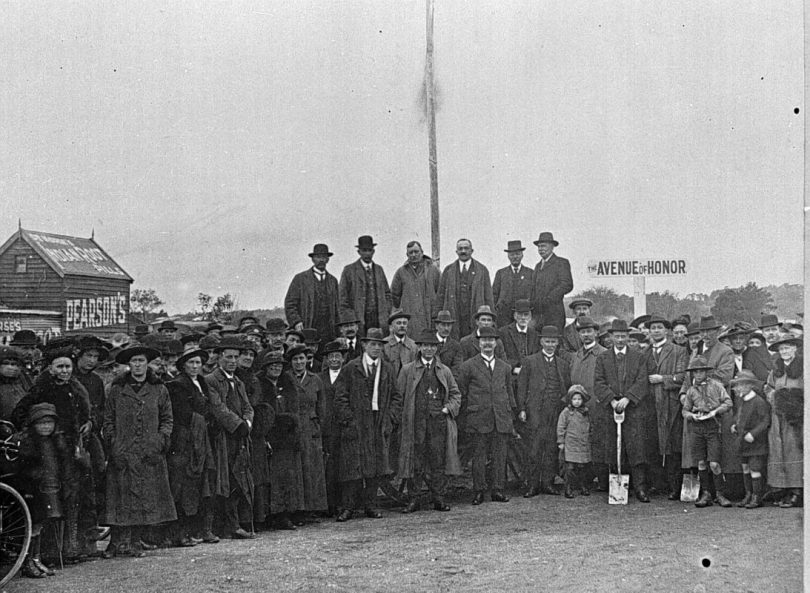
Tree planting ceremony at Ballarat in 1912. Photo: Melbourne Museum.
There’s now an increasingly urgent call to ensure the remaining trees are documented and, where possible, restored. About 200 Avenues of Honour are believed to still exist around Australia, mostly on the east coast.
Non-profit organisation TREENET runs an Avenues of Honours program that aims to honour with a tree the memory of every Australian who died in war and in doing so, document and preserve existing avenues.
There’s a database of remaining plantings, and after the project was initiated in 2004, three times more avenues than had been previously known were identified with public input. However, many were in a poor state.
“These trees are living reminders of those who have served, sacrificed and suffered,” TREENET director Glenn Williams said in 2020.
“And to keep them alive, we’re calling on all Australians to contribute their local knowledge.
“We want to hear from anyone who can improve our histories and stories of these memorial trees. When were they planted? What stories of local service people should be remembered with the trees? Are our existing location details and photos of each site as accurate as possible?”
Contributions to improve and expand on the database are welcome via Avenues of Honour or [email protected].
Do you have more information about an Avenue of Honour in the Capital region?







